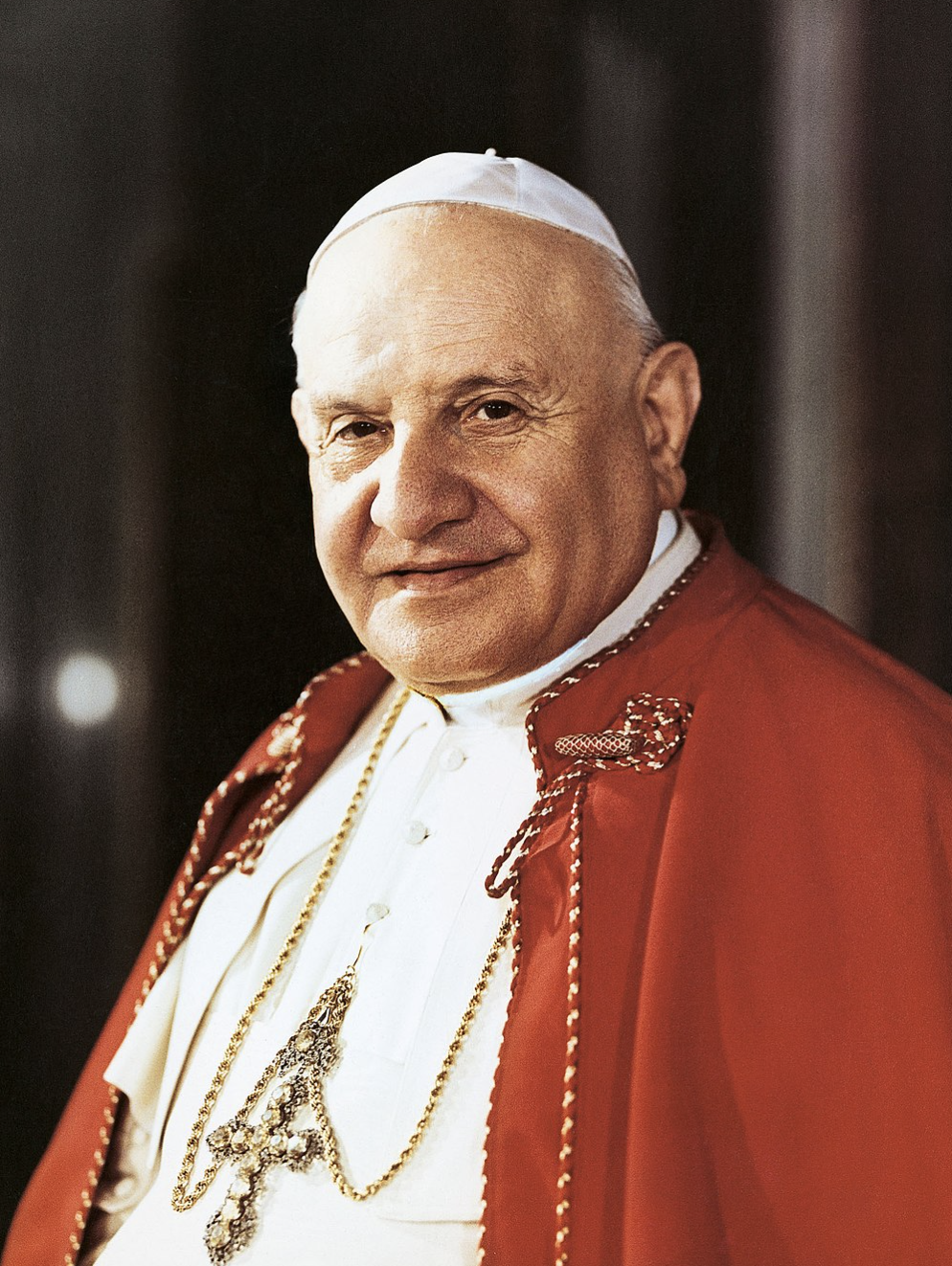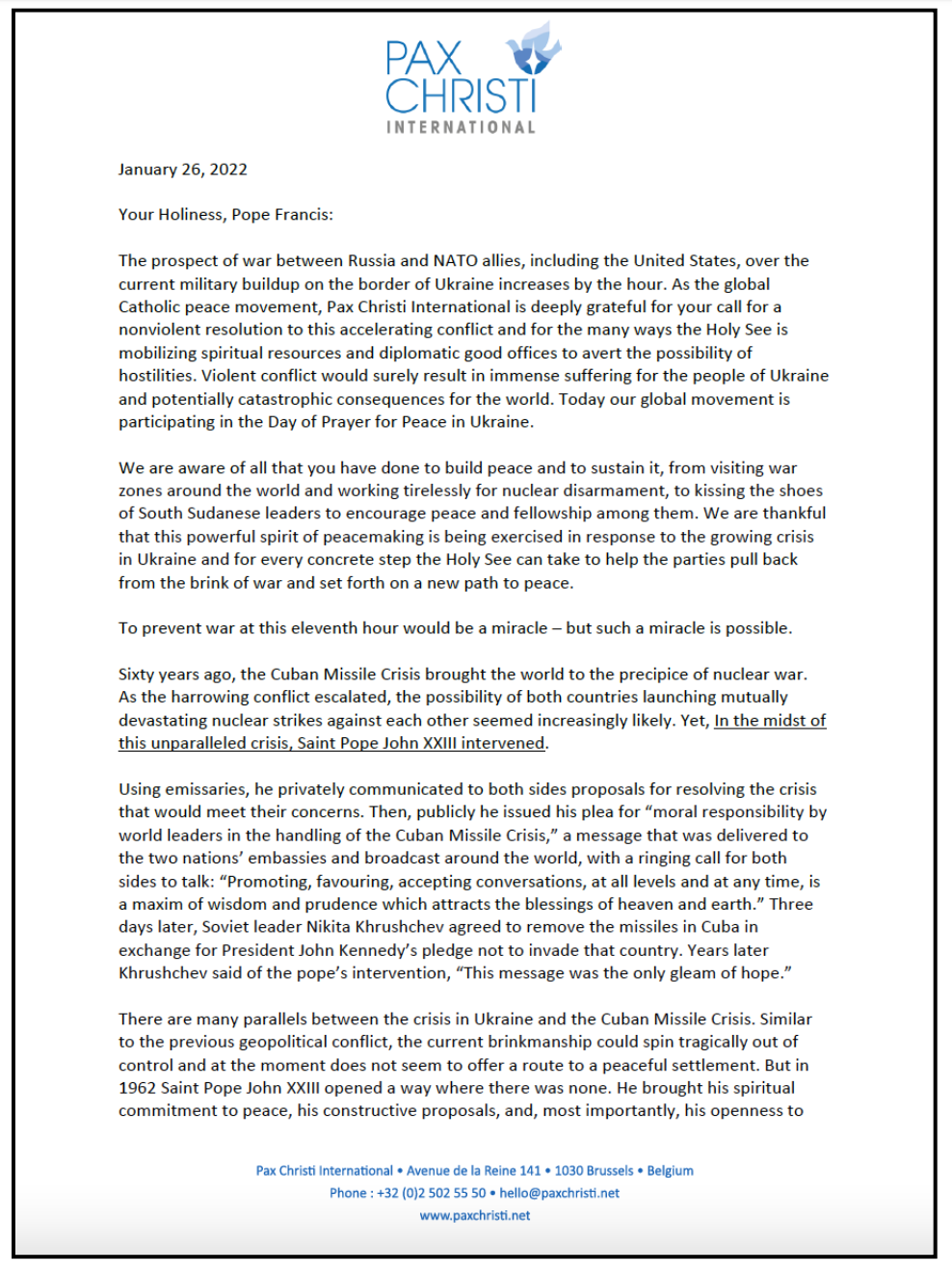Navigating Toward a Nonviolent Peace in Ukraine?
Photo: Nacho Arteaga via Unsplash.com
Nearly sixty years ago, Saint Pope John XXIII did something unusual, at least as far as popes are concerned: he gently placed a love letter in humanity’s trembling hands. Papal encyclicals, before and since, have typically been meant only for Catholics, but Pacem in Terris — Peace on Earth — was addressed to any and all who cared to read it. Written as John was dying of stomach cancer, the letter was an urgent call for peace, human rights and justice interweaving the vision of a more humane order free from war with practical steps to move the world concretely in that direction.
Pope John’s letter was not an abstract theological treatise. Rather, it was in part a direct response to the growing danger of an accelerating nuclear arms race between the United States and the Soviet Union at the time, symbolized most starkly by the Cuban Missile Crisis that had taken place a few months before.
Saint Pope John XXIII
At the height of the crisis, John XXIII played a pivotal role in helping the superpowers pull back from the brink. After behind-the-scenes communications that brought President John F. Kennedy, Soviet Premier Nikita Khrushchev and the pope into an “improbable triumvirate” (as Norman Cousins, a founder of the anti-nuclear organization SANE and a go-between in the discussions, named this ad hoc partnership), John XXIII delivered a statement on Vatican Radio begging “all governments not to remain deaf to this cry of humanity. That they do all that is in their power to save peace. They will thus spare the world from the horrors of a war whose terrifying consequences no one can predict. That they continue discussions, as this loyal and open behavior has great value as a witness of everyone’s conscience and before history. Promoting, favoring, accepting conversations, at all levels and in any time, is a rule of wisdom and prudence which attracts the blessings of heaven and earth.”
In a latter historical assessment, scholar Ronald J. Rychlak concluded,“With his plea, Pope John XXIII had given Khrushchev a way out. By withdrawing now, he would be seen as a man of peace, not a coward. Two days later, Khrushchev…agreed to withdraw the missiles.” We now know that this resolution included President Kennedy’s secret agreement to remove nuclear missiles from a US base in Turkey, on the Soviet border.
John XXIII’s 11th hour intervention was a plea — but a plea that was also a powerful nonviolent action. He did not remain silent. Nor did he simply rail against the parties — anathematizing one side or the other, or both, as past popes were wont to do. Instead, he actively put the weight of the Church behind an invitation for both sides to give up their individual truth for a larger one and to break the inexorable cycle of unimaginable violence. Before becoming pope, Angelo Roncalli had played many peacemaking roles as a priest, papal ambassador, and bishop both before and during World War II, but his most powerful peacemaking played out during this most dangerous moment of the Cold War.
For the remaining months of his life, John XXIII continued to foster peace between the two global antagonists. “World peace is mankind’s greatest need,” he told Cousins. “I am old but I will do what I can in the time I have.” Part of this included writing Pacem in Terris, which he began in November 1962. Just as his response to the Cuban Missile Crisis was ultimately more an act of peacemaking than a simple plea for peace, Pacem in Terris can fruitfully be thought of as a form of nonviolent action even more than a call for it.
Rooted in the experience of peacemaking, its direct speech challenged militarism concretely and set out steps for change: the number of weapons in every country must be reduced; atomic weapons must be banned; and disarmament must be established and enforced by common agreement. It also explicitly offered Catholics and others an historic warrant for civil disobedience and civil resistance: government authority need not be obeyed when it undermines “truth built on justice.”
This pronouncement was a call to nonviolent resistance — which, over the past five decades, has inspired and legitimated action, from the church hierarchy in the Philippines organizing nonviolent action against the Marcos dictatorship to Saint Oscar Romero’s courageous solidarity with the poor, to innumerable movements for peace and justice around the globe — but was also itself an act of nonviolence, sending shock waves through systems that had for centuries come to expect the church to rubber stamp militarism and injustice.
Which brings us to the present moment.
Pax Christi International has applauded the many steps Pope Francis has been taking to encourage a peaceful resolution of the growing crisis taking place on the border between Ukraine and Russia.
At the same time, in a letter sent to Pope Francis this week it has respectfully encouraged His Holiness “to open the way for the Russian leader and the second U.S. Catholic president to dialogue and even to build trust, echoing the way Saint Pope John XXIII brought the Soviet leader and the first U.S. Catholic president together to do so.” (See the letter here.)
In an increasingly dangerous moment, might Pope Francis, like Pope John did with Soviet leader Nikita Khrushchev and President John Kennedy, call on the parties come to an agreement, in whatever fitting private or public venue as necessary?
Since the beginning of his papacy, Pope Francis has increasingly invited the Church and the world to commit itself to nonviolence — to say “no” to violence and “yes” to the difficult but powerful nonviolent option. In a letter to Cardinal Blase Cupich of Chicago, Pope Francis wrote that “the consistent practice of nonviolence has broken barriers, bound wounds, healed nations.” In this spirit, he has traveled to war zones around the world and sought peace in many dramatic ways.
Here is one poignant example.
In April 2019, Pope Francis hosted a two-day “spiritual retreat” at the Vatican for the president of South Sudan and the opposition leaders of that country. The previous fall, an historic peace agreement had been signed between them, but the parties had been having difficulty implementing it. There was grave danger that this new country would be plunged again into civil war, a conflict that had already cost nearly 400,000 lives. The encounter in Rome was an opportunity for dialogue and renewing the task of working for peace for the 13 million people of South Sudan.
At the end of this gathering, Pope Francis pleaded with the leaders to honor the armistice they had signed and to work together as one government. In unscripted remarks, he said, "I beg you as a brother to stay the course of peace. I appeal to you with all my heart: move ahead as one.” Then, unexpectedly, he stooped down and, kneeling on the floor, kissed the feet of President Salva Kiir and those of the opposition leaders. He stunned his guests with this altogether surprising gesture. “I was shocked, and I trembled when His Holiness the Pope kissed our feet,” the president told the South Sudanese parliament a month later.
While there have continued to be serious ups-and-downs in South Sudan since then, the following February the parties finally formed a unity government. In this one act, building on long-term Church-led efforts for peace in South Sudan, Pope Francis unleashed a creative tension that played a role in bringing enemies together and nurturing hope for reconciliation.
Might such a heartfelt drama unfold with a similar plea for peace in this critical moment when war seems immanent in Ukraine, to help make a way where there is no way?
This article is adapted and updated from a piece published by Waging Nonviolence in 2013, marking the 50th anniversary of Pacem in Terris.




